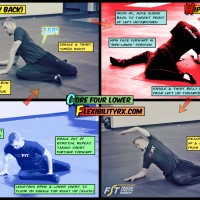
Stretch-to-Win® Core-Four Lower
This sequence releases the core-musculature around the hips; which includes the gluteals, QL (low-back), deep hip-flexor (psoas), and lats. The Core-Four is the starting point and foundation for increasing both lower and upper body flexibility due to this muscle groups’ affect on all movement from core to extremity.
Stretching from Core-to-Extremity
Chris Frederick’s explains, “All movement is generated from the ‘punctum fixum’ or fixed point of the core. Restrictions in fascia and the muscles of the pelvic, hip, and lumbar complex can negatively impact all primary movement patterns.”
Releasing this group of muscles (that can pull the hips and spine out of alignment), enhances the core’s ability to provide a stable base for movement. This will enhance your workouts, chiropractic adjustments, and ability to stretch more effectively on your own.
Glutes & External Rotators
Ida Rolf, founder of Structural Integration, calls the hip “the joint that determines symmetry,” referring to the pelvis also as the “keystone of human architecture”. Knee and low-back problems often are symptoms of hip dysfunction. Proper hip alignment is largely dependent on the glutes/external-rotators, hip-flexors, and adductors.
The hamstrings are often the first area targeted to increase flexibility, but as Tom Myers explains, “Postural patterns are held in the deeper single-joint muscles (locals), and not so much in the multi-joint muscles (expresses). Expresses (hamstrings) coordinate motion and make acceleration of complex actions smooth and even.”
Corrective strategies should focus on releasing and/or strengthening the muscles closest to the hip like the gluteals and external-rotators, which are responsible for pelvic alignment. By restoring pelvic alignment – seemingly ‘tight’ muscle groups like the hamstrings will be under less strain and function better.
Hip-Flexor (Psoas)
Chris Frederick explains, “It is well known that tight hip flexors will neurologically weaken your glutes, which makes your back and hamstrings work harder and raises risk for injury during squats and overhead lifts.
Quadratum Lumborum
QL (Quadratus Lumborum) spans from the top of the hips to the ribcage and lumbar spine – connecting the hips to the torso. A hypertonic QL is a common cause of low-back pain. QL works with the opposite glute to stabilize the hips, and is often hypertonic when the adductors on the opposite glute side are tight. Right knee pain for example, may require strengthening the right glute, stretching and strengthening the left QL (side plank), and stretching of the right adductor.
Lattissimus Dorsi (Lats)
Lat is the broadest muscle of the back and influence both arm position and low-back/hip position. While the lats can be stretched from the “Mission-Control” position for the Core-Four, a lat band stretch variation is provided below. Tight lats can limit shoulder flexion, restricting your ability to press and overhead squat comfortably. Tight lats can also contribute to anterior pelvic tilt and hyper-extension of the low-back.
The lats are often the connection between lower and upper body dysfunction. The stretch below includes two positions: a forward and side lunge. The forward lunge targets the upper portion of lat for shoulder flexibility, while the side lunge releases the fibers of the ribcage that span down to the hip. Use both together, assessing the lower and upper portion of each arm.
Lat Band Stretch Variation
Here is a video of the Core-Four
…and finally an additional handout of the ‘Core-Four Lower’ with a different version of the hip-flexor stretch.
– Kevin Kula, “The Flexibility Coach” – Creator of FlexibilityRx™
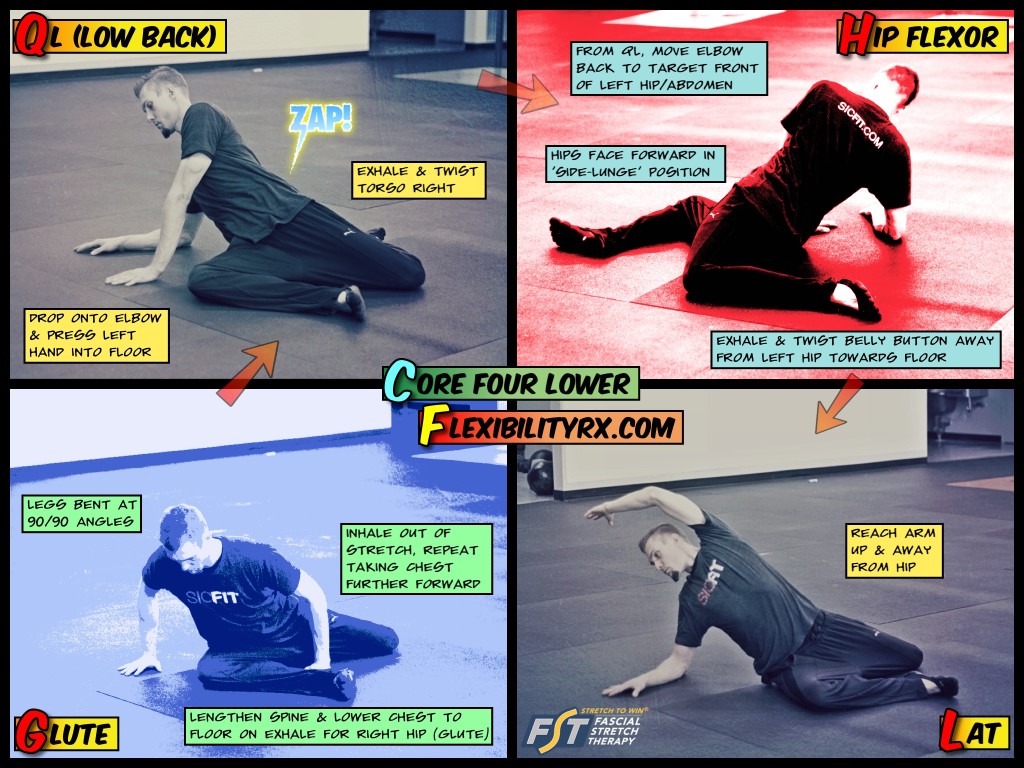
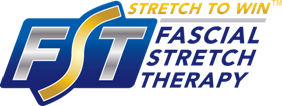
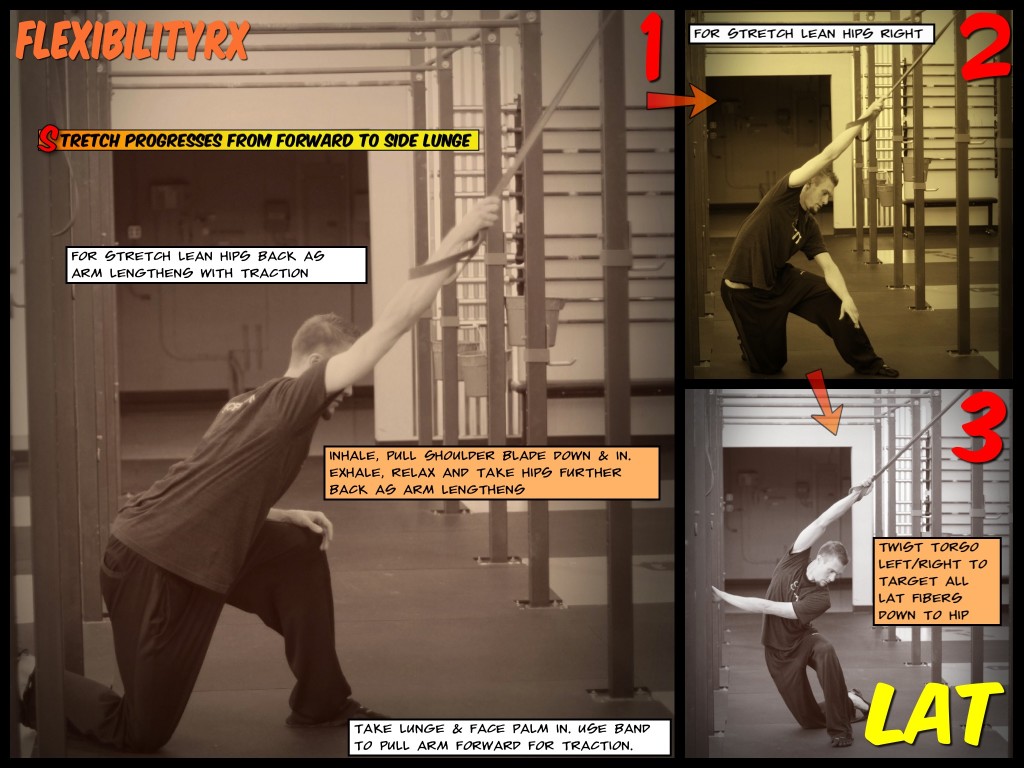
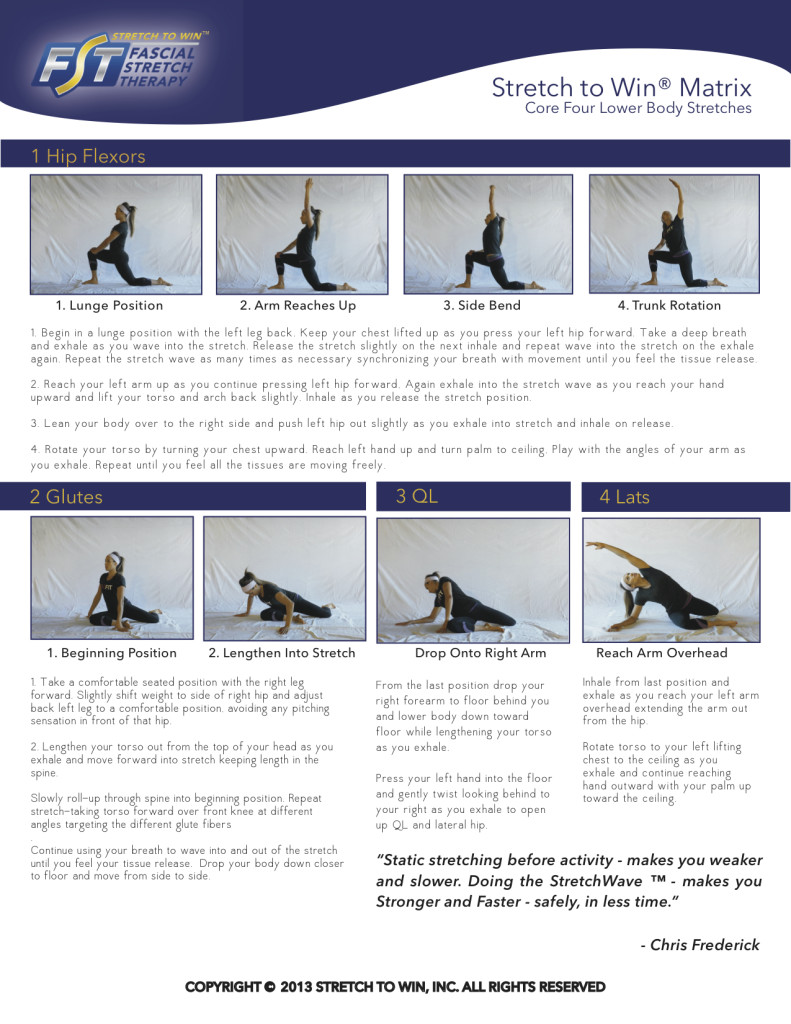
Leave A Reply (No comments so far)
You must be logged in to post a comment.
No comments yet